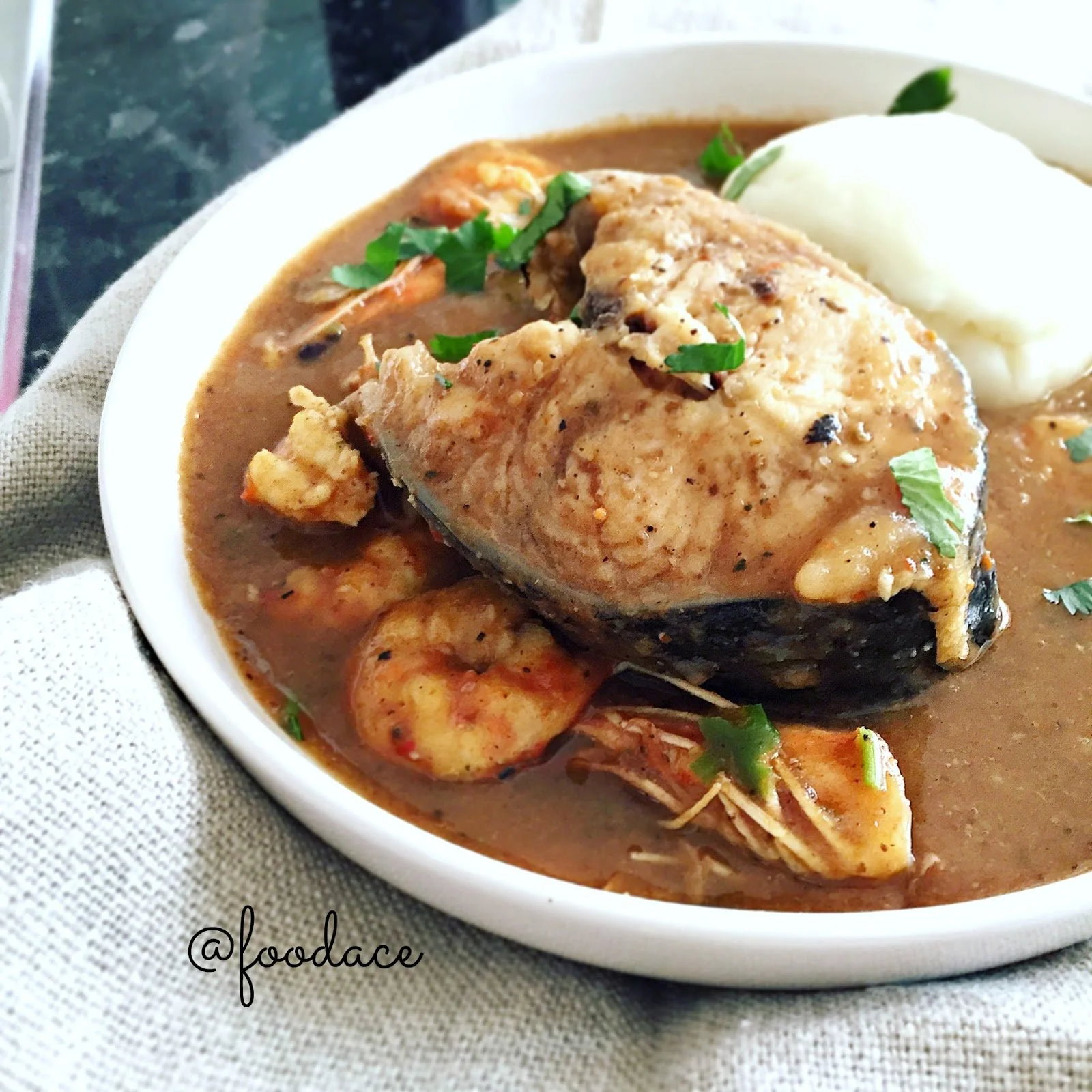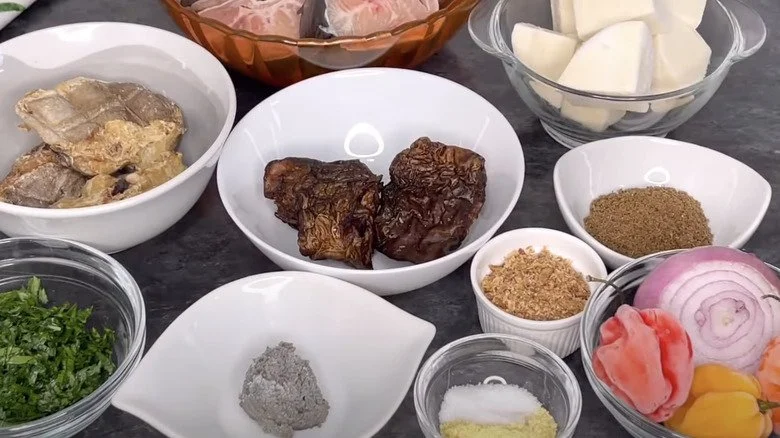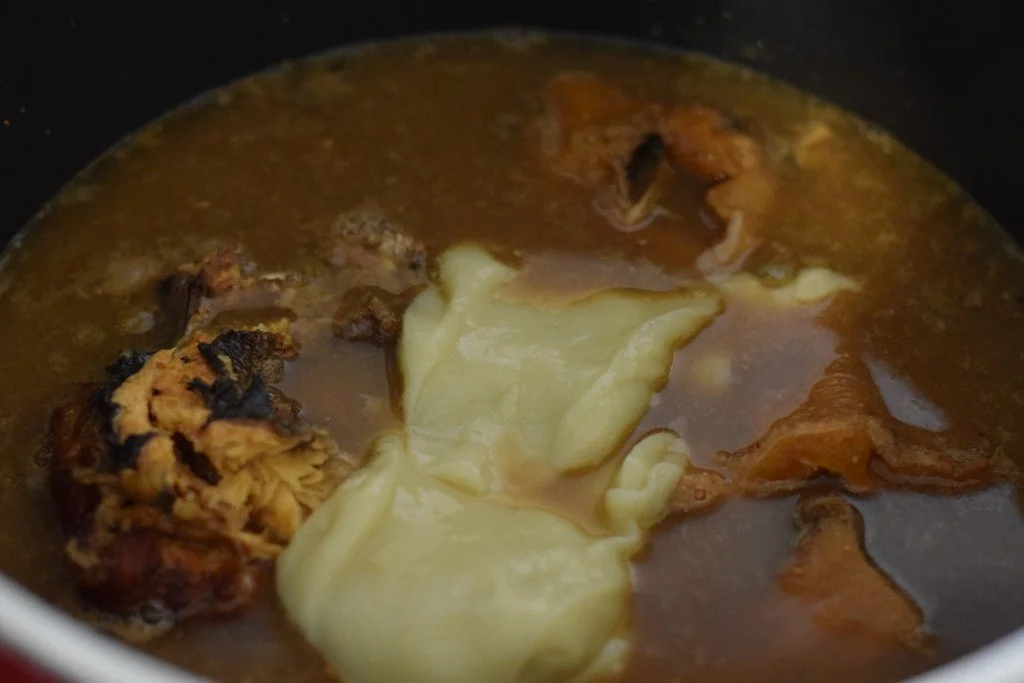From Yam to Yum: Cooking Authentic Nsala Soup with Pounded Yam
By: Chimdindu Ken-Anaukwu
In Nigeria’s culinary landscape, few dishes embody both elegance and comfort like Pounded Yam and Nsala—popularly known as “White Soup.” Originating from the Igbo people of southeastern Nigeria, Nsala is distinct for its light color, velvety texture, and peppery, slightly tangy taste. Traditionally prepared with fresh catfish, goat meat, or chicken, and thickened with ground yam or cocoyam, this dish is a celebration meal, a healing comfort food, and a cultural emblem all in one.
Whether you’re hosting guests or simply craving a rich, soul-warming soup, mastering Nsala with pounded yam will instantly transport you to a traditional Igbo kitchen.
Here’s how to prepare it at home.
What You’ll Need
Main Ingredients for Nsala Soup:
Fresh catfish (about 1kg) or goat meat/chicken (washed and cut into pieces)
Yam tuber (about 1 medium-sized) – for thickening
Utazi leaves – a few for a subtle bitter-sweet kick (optional)
Ground crayfish – 2 tablespoons
Seasoning cubes – 2–3
Salt – to taste
Spice Blend:
Uziza seeds – 1 tablespoon (ground)
Ground pepper (scotch bonnet or chili) – to taste
Ogiri (fermented locust bean) – optional, for extra depth
For the Pounded Yam:
Fresh yam tuber – peeled, boiled, and pounded until smooth and stretchy (or use yam flour for a quicker version)
Step-by-Step Instructions
1. Prepare Your Protein
If using catfish, wash thoroughly with hot water to remove slime, then season with salt, pepper, and one seasoning cube. If using goat meat or chicken, parboil in salted water with chopped onions and pepper until tender. Reserve the stock for cooking.
2. Make the Yam Thickener
Peel and cut the yam into small chunks, boil until soft, then pound in a mortar (or blend) until smooth. This will be added later to thicken the soup.
3. Build the Flavor Base
In a pot, add your protein and reserved stock. Stir in ground crayfish, ground uziza seeds, pepper, and seasoning cubes. Let it boil gently so the flavors begin to blend.
4. Add the Yam Thickener
Scoop small portions of the pounded yam into the simmering soup. Stir well until it dissolves and thickens the broth to your desired consistency. Nsala should be light but creamy—not too thick.
5. Final Touches
Add washed utazi leaves (optional) for that characteristic bittersweet finish. Adjust seasoning with salt and pepper, then let the soup simmer for an additional 5–7 minutes.
6. Make the Pounded Yam
If you haven’t already, pound boiled yam in a mortar until stretchy and smooth. Alternatively, prepare yam flour in hot water, stirring until lump-free. Shape into a ball for serving.
7. Serve and Enjoy
Ladle the steaming Nsala into bowls and serve alongside generous scoops of pounded yam. Tear off a piece of the soft, stretchy yam, dip into the soup, and savor the light, aromatic flavors.
Cooking Tip
For an authentic Nsala experience, always use fresh fish or meat—frozen substitutes dull the flavor. Uziza seeds and utazi leaves are optional but bring a traditional sharpness that elevates the soup from “just good” to “absolutely divine.”
Why Stop at Cooking? Learn the Language!
As you enjoy Nsala, why not learn a bit of Igbo to deepen your cultural connection?
Igbo: Ọ dị ụtọ! (It is delicious!)
Igbo: Anọ m na eri nsala. (I am eating nsala.)
Cooking Nsala is more than making a meal—it’s keeping a tradition alive. With every taste, you’re partaking in centuries of Igbo culinary heritage. So, roll up your sleeves, pound that yam, and let your kitchen smell like home.
Taste the Culture, Speak the Language with NKENNE
Why just cook like an Igbo when you can speak like one too?
With the NKENNE app, you’ll go beyond recipes—learning Igbo (and 13 other African languages) in a way that’s fun, practical, and rooted in real culture.
You can master greetings before serving your guests, learn how to pronounce Ọ dị ụtọ! perfectly, and explore the proverbs, history, and expressions that make dishes like Nsala more than food—they’re stories.
Ọ dị ụtọ!
📲 Download NKENNE today and bring Africa’s languages and traditions into your daily life. Your kitchen will thank you, your friends will be impressed, and your heart will be full.




